Bloodworms: how to get, store and hook
Bloodworm is without exaggeration a universal bait used by anglers all year round. Most fishermen buy it in stores, not thinking that it is not so difficult to get this red worm yourself, and the savings from this, given the large number of trips and the significant consumption of this bait, will be quite tangible.
How to do this, how to properly preserve the extracted bloodworm and correctly attach it to the hook, we will understand in this article.
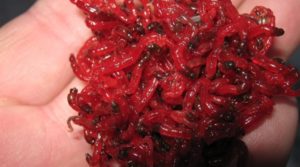
Content
How to get bloodworms in winter: ways
The bloodworm (larva of the long-legged mosquito) lives in thick silty sediments of stagnant water bodies - ponds, lakes, stakes, river oxbows. You can get it in several ways, read about them below.
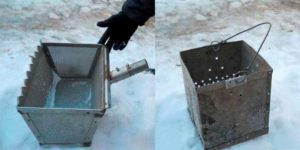
Sludge washing
This method of washing bloodworms is the oldest and most proven. It includes such actions:
- We lower a long stick with a scoop rigidly attached at the end - a capacious pan or an old sieve, a bucket made of a fine mesh net into an ice hole 1 × 1 meter in size. Such a device is called a moth.
- We rake in the silt with a bucket and raise it to the surface.
- We wash the sludge in a rectangular metal frame, in which the sides and bottom are made of mesh with a cell diameter of no more than 0.5 mm. For washing in the upper part of the frame at the ends, we make two wire handles.
- We wash out the silt by lowering the frame into the hole and performing movements with it similar to those with which in the old days women washed out linen.
- When rinsing, the sludge is washed out, and ruby larvae with a small amount of large debris - foliage, small twigs, grass residues remain in the frame
- We select the garbage by hand, and pour the larvae into a plastic bucket with a lid.
Collecting with strings
Collecting with strings allows you to very quickly wash a large amount of bloodworms in a relatively short period of time. For this method, you should use a special moth called "Guitar" :
- In order to get bloodworms with a "guitar", we lower this device into an ice-hole and, like a rake, we run it along the bottom - silt and debris slip between the strings, and the bloodworm clings to them.
- We carefully raise the "guitar" to the surface, remove the larvae caught on the strings with a stick into a previously prepared bucket.
- After the bucket is full, we wash the bait and put it in another container.
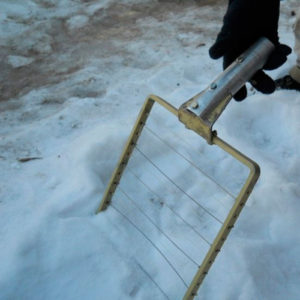
Thermal method
This method of extraction is based on the craving of all living organisms for heat. The bloodworm, which feels great in cold water, is no exception:
- We scoop out the silt with a moth and place it in a bucket.
- We put the bucket next to the fire - the larvae, feeling the warmth, float to the surface.
- We collect the emerged bloodworm with a sieve and place it in a dry, clean container.
For bait
This method of catching bloodworms is the most primitive, but at the same time it requires more time than all others to get this bait. It can be used to stock up on a small amount of bait for one fishing trip.
- We wrap a piece of fish or meat in a gauze bag, weight it with a flat lead sinker.
- We lower the bait to the bottom on a long line.
- After 1-2 days, we take out the bait, unfold and collect the bloodworm that has packed inside.
Important! You should get bloodworms as close as possible to the center of the reservoir, away from bushes, trees, thickets of reeds - this will avoid unnecessary garbage in the form of a large amount of foliage, grass and branches in the silt raised from the bottom.
Video: how to get (wash) bloodworms in winter
How to keep bloodworms alive at home: basic rules and methods for long-term storage
Very often, the interval between catching bloodworms and going fishing is from several days to a week. Also, often after fishing, with a weak bite, a fairly large amount of bait remains. Both in the first and in the second case, the angler faces a very important problem - how to keep bloodworms alive?
There are many ways to store this bait. We will consider the most basic of them below.
In newsprint
We take 3 sheets of plain newsprint - moisten 1 of them, and leave 2 dry. Lay a wet sheet on the dry bottom, lay the bloodworms on it in a thin layer and cover it with a second dry sheet on top, and then fold the paper with an envelope. We place such a "storage" with bait in the refrigerator on the lower shelf. Once a day we unfold the envelope, remove the dead larvae and replace the wet sheet with a new one.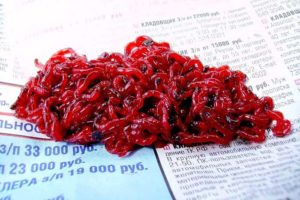
Woolen or canvas rag
We moisten a simple woolen or canvas napkin in cold melt water, lay it out on it with an even layer of bloodworm and wrap it in a bag. We store the bait in a rag in a cool place - on an unheated balcony, in the cellar, on the bottom shelf of the refrigerator.We check daily the safety of bloodworms, remove dead larvae, wash the napkin in hot water to remove mucus and secretions of dead worms.
Raw potato
In a large, non-rotten fresh potato, cut off the top, cut out a large notch inside, place the bloodworms there and close the top with a previously cut piece. It is better to store the potato in the refrigerator, removing dead larvae every day and rinsing the cavity with cold water.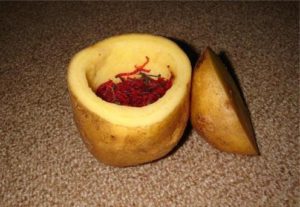
Potato squeezes
Rub a few potatoes on a fine grater, wrap the resulting gruel in a napkin and squeeze it well. The resulting mass - squeeze - lay out on cheesecloth, place a layer of bloodworms on it, cover it with another layer of squeeze on top and wrap it in cheesecloth. We store bloodworms in the refrigerator, checking and updating the squeeze daily, removing dead larvae.
Cabbage
In a small fresh head of cabbage, bend several top sheets, place bloodworms in the gaps between them and put it in the refrigerator. We periodically check the head of cabbage for signs of spoilage, remove dead larvae.
Used tea leaves
Place the used tea leaves on a gauze napkin, put a layer of bloodworms on top and wrap them in a bag.
Sand with water
In a shallow glass or plastic container, fill it with a 1-2 cm layer of sifted fine-grained sand, fill it with water so that its level is slightly higher than that of sand. Pour bloodworms into the water. During storage, live larvae will burrow in soft sand, and dead ones float to the surface. The container must be placed in the refrigerator and water with dead larvae must be drained 2-3 times a day, replacing it with fresh one.
Flat vessel
In a flat plastic tray, lay out the bloodworms in an even layer, slightly moisten with cold water and close the top with a tight lid. It is necessary to change and remove dead bloodworms at least 1 time per day.
Toilet cistern
We put the bloodworms in a nylon stocking and place them in the toilet cistern. We check the stocking with the contents every day.
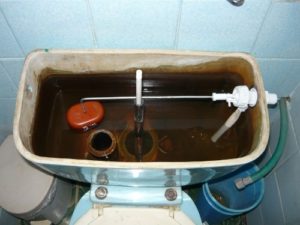
Wet foam rubber
Put a piece of moistened foam rubber in a spacious plastic container with a lid and lay out bloodworms on it, tightly close the container with a lid. We store the container in the refrigerator, periodically moisten the foam rubber, removing dead larvae from it.
Thermos with ice
Fill half of the thermos with crushed ice and put a gauze bag with a bloodworm there. We store the thermos in a cool place, periodically replacing the melted ice with a new one.
Can
In a tin can from under canned food we drill holes with a small drill, process the burrs inside the container with a file. We wrap the jar with several layers of gauze and place it in a larger container, through which we let cold running water. This method allows you to keep the bait due to the constant movement of water in the bank.
Frozen bloodworm
Pour bloodworms into a plastic pallet with thick walls, fill it with cold water and, wrapping it with stretch film, freeze it in the refrigerator. This method allows you to save bloodworms for several months. The disadvantage of freezing is that after thawing, the larvae become very soft and vulnerable to pressure.
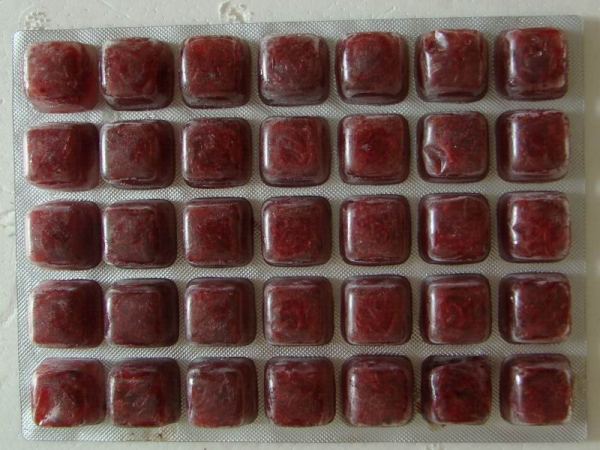
Important! When storing bloodworms, it is important to remove dead larvae as often as possible, the contact of which with live worms is fatal for the latter. It is also necessary to frequently change the water and clean the storage substrate from mucus released when the bait dies off.
Video: how long to keep bloodworms alive at home
How to store bloodworms when fishing
In a foam box with holes or in a wooden box with holes, which is wrapped in a damp cloth or newspaper (newspaper is more convenient). To keep the bloodworm from freezing, it is best to keep it in your inner pocket during winter fishing.
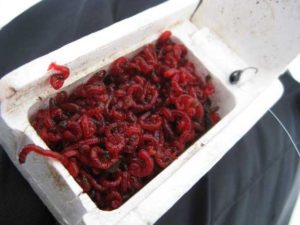
How to put bloodworms on a hook or jig
In fishing practice, several basic methods are used to attach the bloodworm to the hook:
- "Hanging Bloodworm" - we pierce the bloodworms for the third segment from the head of the larva. In this way, one or two larvae are planted.
- "Ring" - with the sting of the hook we pierce the larva first by the head and then by the tail segment. With this method, bloodworms hang in the water column or lie at the bottom in their natural form.
- "Stocking" - we insert the hook into the second segment from the head and carefully put the larva on the hook, hiding the sting inside its body.
- "Sheaf" - with the help of elastic bands and a special device, 3-5 larvae are attached to the forend of the hook. With this method, the bait is almost not injured and remains alive and mobile for a long time.
- "Across" - with a sting we pierce the larva in the middle, leaving it outside.
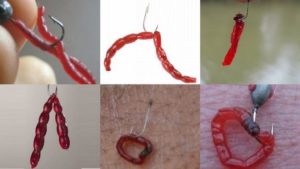
Important! When attaching a bloodworm, it is necessary to monitor the sharpness of the hook - the blunt sting will not enter the soft body of the larva, but will tear it apart, after which the appetizing ruby worm will turn into a piece of dead whitish tissue that is unattractive to fish. You can check the sharpness of the hook by slightly sticking it into the surface of the nail and then trying to move it - a well-sharpened sting will hold the hook firmly and will not allow it to move, while the blunt hook will easily begin to move, leaving a noticeable scratch on the surface of the nail.
Video: 5 ways to hook bloodworms
As we can see, getting, storing and planting bloodworms is not very difficult, but still requires a careful approach and sometimes simple fishing ingenuity.

